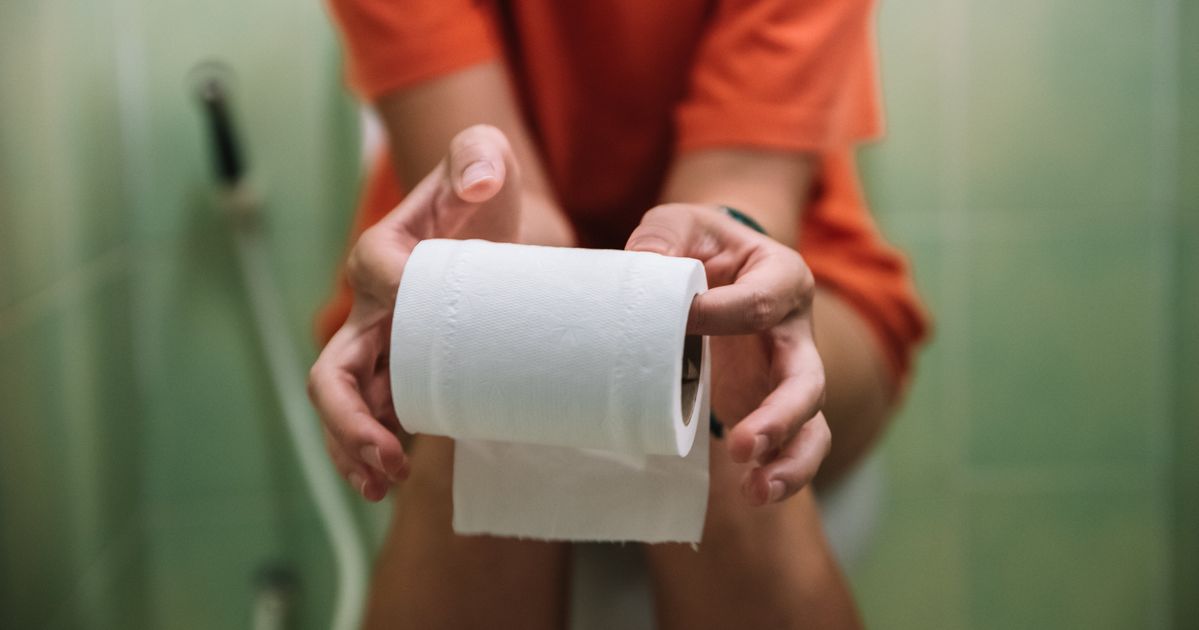
If you’ve never had a haemorrhoid, you’re very lucky. If you have, you’re all too familiar with the extreme discomfort that comes from this particular digestive affliction. Characterised by pain, itching, irritation and sometimes bleeding in the anal region (TMI, we know), haemorrhoids are swollen veins in the anus and lower rectum. And no one wants to deal with them.
While haemorrhoids are very treatable and you should always seek medical attention if you’re dealing with one, there’s one common toilet habit that makes you more prone to them. We asked gastroenterologists about it — here’s what they had to say.
The Toilet Habit That Makes You More Prone To Haemorrhoids
If you enjoy settling in with a good book or scrolling TikTok when you hit the toilet, we have news for you: This sacred time may be making you more prone to haemorrhoids.
“Haemorrhoids are engorged blood vessels in the lower rectum and anus. While everyone has these blood vessels, they only become symptomatic when they become enlarged or inflamed, which can occur due to several factors,” Dr. David L Schwarzbaum, a gastroenterologist, told HuffPost. “One common cause is due to sitting on the toilet for a prolonged time. This is because when one’s bottom is in the space of the toilet seat, the blood will pool in the lowest point and cause increased pressure in the blood vessels in the anus, leading to haemorrhoids.”
Dr. Prasun Shah, a gastroenterologist with Memorial Hermann, added that when you’re sitting too long, gravity is working against you, leading to poor circulation.
“Sitting for a prolonged period can impair blood flow to and from the rectal area, leading to blood pooling in the veins and causing them to swell,” he said.
While prolonged sitting can cause haemorrhoids, too much straining during a bowel movement can, too — so this isn’t an ideal way to try to decrease your toilet-sitting time.
“Trying to ‘push out’ a bowel movement also increases pressure in the anorectal blood vessels and is another common cause of haemorrhoids,” Schwarzbaum said. “I often counsel my patients that when they feel the urge to defecate to go to the toilet, avoid straining, and if they cannot relieve themselves at that time, then to get up and try again at a later time when they have an urge again.”
So, what’s the ideal amount of time to sit on the toilet?
“I would generally recommend trying to limit bowel movements to 10-15 minutes at most to reduce the risk of haemorrhoids,” Schwarzbaum said. “I also counsel them to avoid scrolling on phones or reading for prolonged periods on the toilet. If you need a break from the rest of the world, sit on top of the toilet seat.”

Other Tips For Preventing Haemorrhoids
If you’re thinking “Wait a minute, I don’t sit on the toilet for long periods and I still get haemorrhoids,” worry not — a prolonged sitting habit isn’t the only cause of haemorrhoids.
“The best way to avoid haemorrhoids is to drink a lot of fluids, have a diet high in fibre, exercise, and avoid excessive straining during the bowel movement. This includes during pregnancy, a leading cause of haemorrhoids,” said Dr. George Pavlou, a gastroenterologist at Gastroenterology Associates of New Jersey.
Schwarzbaum echoed this, noting that preventing constipation is also key to haemorrhoid prevention.
“This starts with a healthy diet, and most importantly 25-30 grams of fibre daily and adequate hydration,” he said. “If this is not sufficient it may be necessary to use stool softeners or laxatives. Additionally, as stated earlier, avoiding prolonged periods sitting on the toilet and regular exercise has also been shown to prevent haemorrhoids.”
Shah also suggested not delaying bowel movements, if possible.
“Holding it in can make stool drier and harder to pass,” he said. “You should also work to keep the anal area clean to prevent irritation. Use moist wipes or water instead of dry toilet paper if necessary. When sitting on the toilet, use a footstool to elevate your feet slightly. This can help achieve a more natural squatting position, making it easier to pass stool without straining.”
Haemorrhoids are no fun, and in some cases, they’re just inevitable (ask any person who’s ever been pregnant about it). But with the right lifestyle tweaks and a little less time sitting on the toilet tapping through Instagram stories, you may be able to make them a less frequent occurrence.
If you’re dealing with a haemorrhoid or have chronic haemorrhoids, make sure to bring it up to your doctor so they can help you get to the root cause and provide a treatment and prevention plan that’s right for you.






